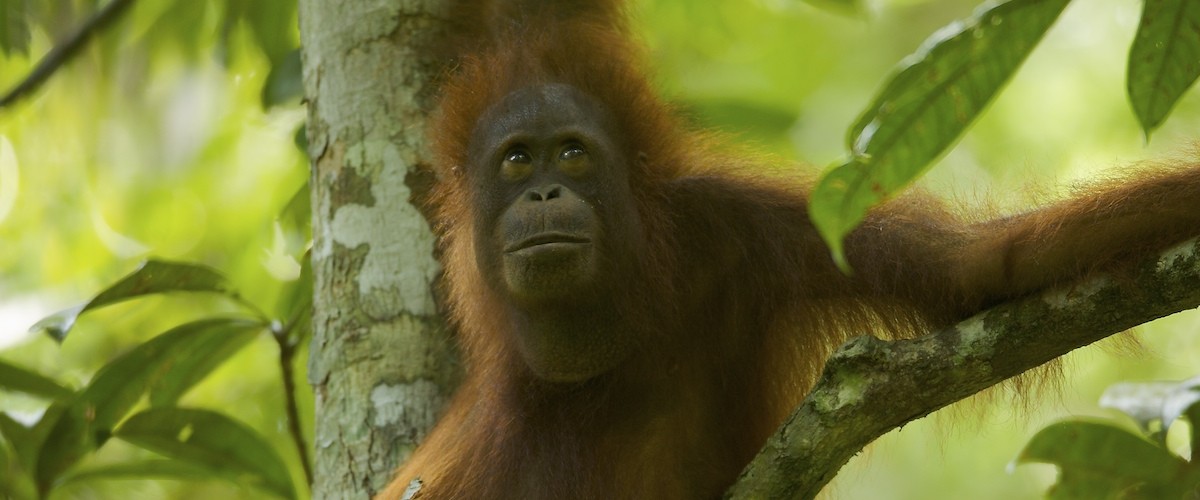As you may recall, last year we conducted a biodiversity survey in our Customary Forests. This area represents nearly 7,500 hectares made up of five villages that is now legally protected from oil palm, mining and other destructive actions. This land now legally belongs to the community. This survey will provide baseline data so we can monitor changes in the plants and animals that call this area home. In late July and early August, we trekked out to these peat swamps again to see how they are faring. These data will provide valuable information to compare to last year and years to come.
Last year, conditions were quite difficult as the water level in the swamp was high due to heavy rain. This year, we began the surveys in the beginning of the dry season, so it was much easier to measure each transect. We used the transect line method. This method requires taking a 1 kilometer string and stretching it from end to end. Our survey team then collected information on any plants or animals that were touching the line. Of course, we are interested in orangutans as well, so we also searched for any nests in the transect areas too. We surveyed a total of 12 transects over 20 days throughout the Customary Forest area.
|
|
| A male orangutan, Pongo pygmaeus wurmbii, currently listed as critically endangered by IUCN. Photo © Tim Laman. |
The density of orangutan nests we found ranged from 0.22 to 0.6 nests per square kilometer. This equates to approximately 16 individual orangutans calling this small area home, with many more passing through. We were also fortunate to see many other signs of wildlife. While we were not lucky enough to actually spot a Sun Bear (Helarctos malayanus), we were able to find signs that they were nearby. In one area we found paw prints in the mud and a tree that was clawed up from the bear searching for insects. The Sun Bear is endemic to Southeast Asia and is classified as Vulnerable by the International Union for Conservation of Nature (IUCN). These bears also make nests in the tree canopy, like orangutans! One way to tell a sun bear nest from an orangutan nest is by the construction. The bears tend to break the branches to make their nest, whereas the orangutans will bend the branches.
|
|
| Proboscis monkeys, Nasalis larvatus, were found along the river during our surveys. They are currently classified as Endangered by IUCN. Photo © Beth Barrow. |
Another interesting animal we ran into was the proboscis monkey (Nasalis larvatus). They love to hang out in the trees along the river with their family nearby. These monkeys are quite distinct with their interesting noses. The dominant male has a large, bulbous nose, while juveniles and females have smaller, more pointy noses. Proboscis monkeys are only found in Borneo and are classified as Endangered by the IUCN.
We also found many fruits and trees that orangutans like to eat. One of my favorites, although not a food for orangutans, is the Nepenthes genus, also known as pitcher plants. These carnivorous plants thrive in the tropical, humidity-rich, environment of Southeast Asian rainforests. Although you may see many of these plants in your own home or garden, many species are classified as vulnerable by IUCN. They are a dazzling spectacle of colors, which makes them a favorite among ornamental plant lovers.
GPOCP would like to sincerely thank the ARCUS Foundation for their support of this survey project. The data collected will be further analyzed and used to determine trends occurring in our Customary Forest areas.









